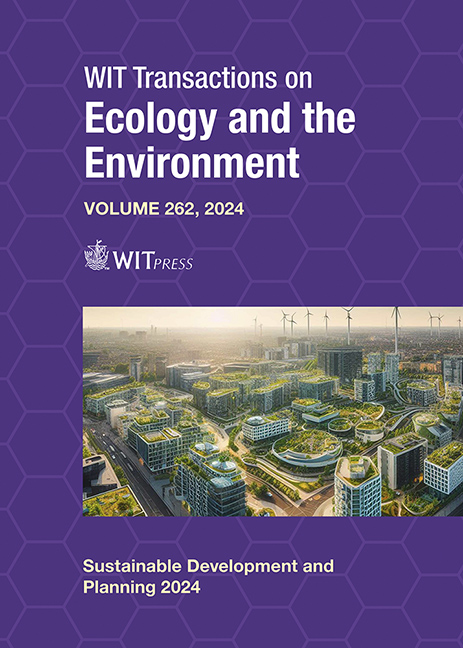MEASURING UNCERTAINTY: FACING PLACE MUTATIONS SUSTAINABLY
Price
Free (open access)
Transaction
Volume
262
Pages
10
Page Range
155 - 164
Published
2024
Paper DOI
10.2495/SDP240131
Copyright
Author(s)
MARICHELA SEPE
Abstract
Urban resilience often conflates crisis events and their adaptation processes, despite their differing characteristics, and fails to distinguish between sudden and unwanted events, leading to ambiguities. To address this, defining ‘multiresilience’ and ‘multiadaptation’ is essential for understanding a place’s behaviour under multiple risk situations increasingly common in contemporary territories. Multiresilience refers to a system’s ability to respond to the simultaneous presence of multiple risks by considering the unique aspects of the place, the characteristics of each risk and the participation of various stakeholders with an emphasis on inclusion, ultimately aiming to return to the initial state. In contrast, multiadaptation describes a system’s capacity to react to unforeseen multi-risk situations by establishing a new equilibrium that accounts for territorial specificities, types of risks, involved actors and emerging needs, also with a focus on inclusion. To practically explore these concepts, a methodology was developed within the PRIN 2020 research project, ‘Sustainable Modelling of Materials, Structures, and Urban Spaces’, under the author’s responsibility of the Urban Impact Unit. Principles for multiresilient planning were identified through case studies utilising this methodology. These principles serve as a flexible tool for designing spaces that are resilient and adaptable to unexpected multi-risk events. Additionally, the Dynamic Place Index (DPI) was created to measure the multiresilience and multiadaptation of an area. This index evaluates the flexibility of different parts of a multi-risk area to accommodate project interventions based on current and emerging needs. Starting from these premises, the study presents the methodology, principles and the DPI, detailing how the index assesses the flexibility of areas affected by multiple concurrent risks to facilitate effective project interventions. This approach ensures that urban spaces are both resilient and adaptable to future challenges.
Keywords
urban uncertainty, multi-risk, multiresilience, multiadaptation, dynamic place





